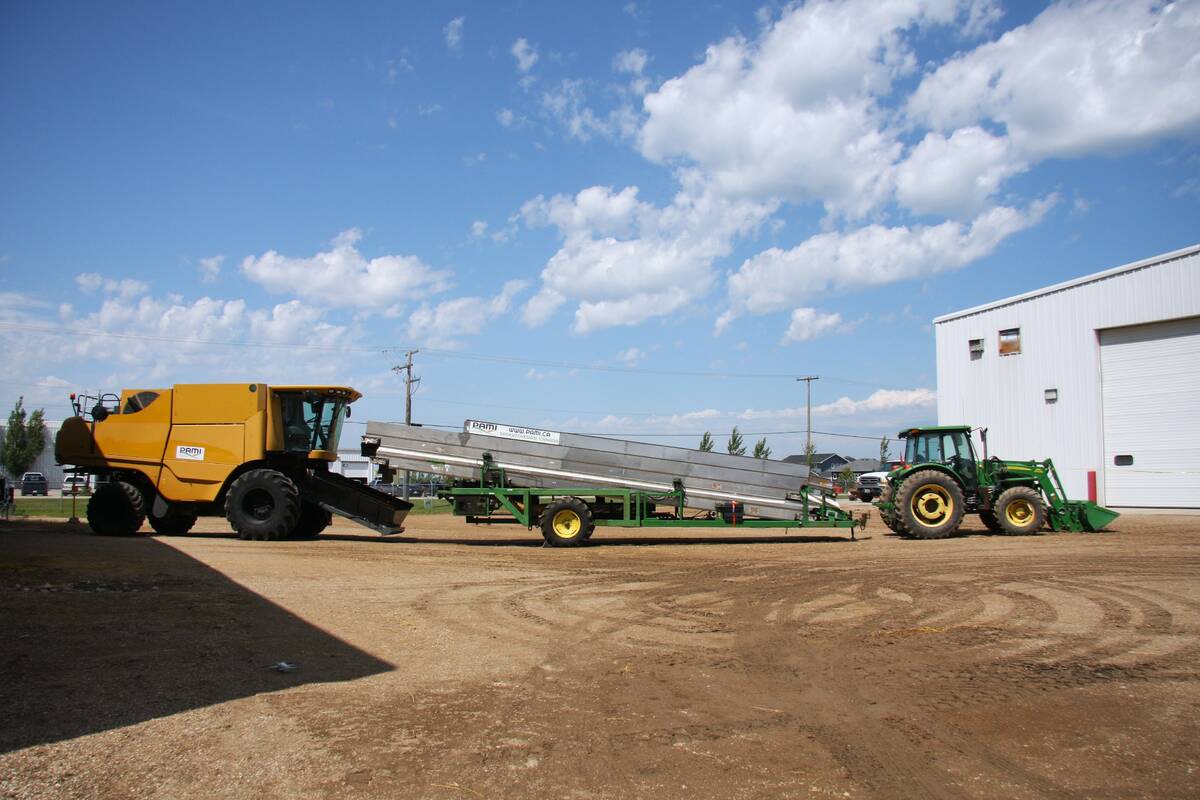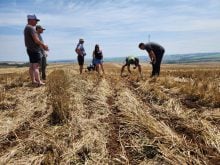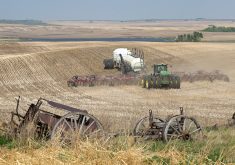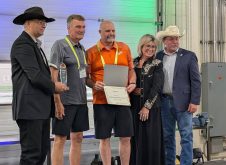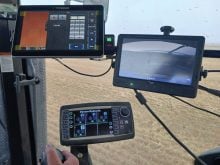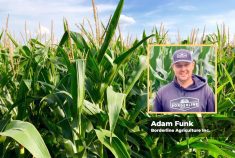Over the past 50 years, the Prairie Agricultural Machinery Institute has become synonymous with machinery and technology development for agriculture, mining and transport.
With its headquarters in Humboldt, Sask., and other locations in Manitoba, it has been the go to for research and development, providing insight for companies of all sizes for 50 years.
It also doesn’t want that to change. So what does the future hold for PAMI?
Read Also

New fertilizer product aims to reduce tie-up, improve soil health
A new phosphorus fertilizer, launched at Ag in Motion 2025, promises to reduce nutrient tie-up and deliver slow-release feeding throughout the growing season.
“Much of the 50 years has been very much focused on the steel, the iron, machinery,” said Lorne Grieger, PAMI’s director of technical sales.
“The next phase that I see is more of the automation and making machinery more capable. Having equipment that is currently capable of certain tasks being even more capable by adding certain features, technologies, and options that go with it as well.”
Paul Buczkowski, PAMI’s president and chief executive officer, said the next steps include looking more at autonomous vehicles, electric vehicles and drones, as well as other elements that customers may raise.
“We provide solutions to customer problems,” he said.
“And I know that’s kind of a weird way of saying it, but that encompasses everything that we do. So, somebody comes in with an idea, and then we can test it and say, ‘yeah, it works, or it doesn’t work, or it might evolve into some sort of amazing thing.’ ”
That evolution and addressing of issues will mean looking into automation, controls and digitization, but also the best ways that this kind of technology can be implemented in machinery, such as how the pieces interact and integrate.
With the speed of technological evolution, PAMI’s team recognizes they have to stay on their toes.
“We have to look at things like autonomous vehicles, or the EVs that are coming out, and trying to help customers when they come in and say, ‘hey, we need to make this better and more efficient,’ ” Buczkowski said.
“So, I have to help change the company in a way, quickly enough that we can benefit from it, but also that we can add that value and stay with our roots.”
Much of the tech being tested has already been developed and used in other sectors, so PAMI must determine how it can work effectively and efficiently in agriculture.
Buczkowski said PAMI is already making a lot of quick pivots to meet consumers’ and companies’ demands and respond to the changes of the digital age, since things move so quickly.
For example, 10-year plans aren’t the standard anymore. The furthest out that PAMI plans is five years. Otherwise, its plans are often set for one to three years.
However, that doesn’t mean big projects aren’t underway.
PAMI works on a number of private and public projects. Currently, it is investigating the use of electric vehicle technology for Canadian agriculture, such as the impact of cold weather on batteries.
“Understanding that in a real practical way,” said Grieger.
“What does this mean for an industry that requires uptime. It’s very critical to have these things work when you need them to work. So, that’s part of what we’re looking at and involved with.”
Buczkowski said the current studies on battery operated agriculture equipment show high inefficiencies because a combine needs to pull a battery the size of combine to have enough power to operate.
“The battery doesn’t even give you the life, like the extended life, of a full tank of fuel, and then you got to worry about charging it, and all that sort of stuff,” he said.
The goal is to be on the edge of the evolution of autonomous machinery, EVs and drones to identify if something will work in the field as well as how it’s laid out on paper.
PAMI has also been looking to the standardization of interconnectivity for the electronic side of equipment.
Grieger said interconnectivity on the mechanical side has long been standardized, and it has clients that have requested information on this.
Another big project it has been undertaking is value processing for a wide variety of products such as pet food and fertilizer. He said PAMI has got into this area to help customers find ways to manage byproducts that typically become waste and find an alternative use for them.
However, the main challenge for PAMI isn’t any of the projects that come its way, but rather the regulatory restraints on technology development.
“It’s the social and regulatory environment that typically restrains and keeps things at that pace that can’t be implemented,” Grieger said.
“So, that’s what we’re seeing right now. The technology is there, it’s having that combination that works, though, and works consistently.”
While technology regulations and standards can sometimes get in the way, there’s not much PAMI can do about it because it isn’t an advocacy or lobbying organization. Instead, it has learned to work within existing frameworks so that it can not only test current tech but also be able to provide policymakers with necessary information.
If policies and standards change, PAMI can step in, test the new standard, and say, ‘yes, this is practical,’ or ‘no, it doesn’t work.’ “
Buczkowski said an area where regulation needs to be sped up is drones.
“From my standpoint, one of the biggest things in the evolution (of technology) is the drones,” he said.
“I would love to see a little bit quicker decisions by the authorities on that, right? Because I think over the long term, if they can make them efficient enough, everything’s going to be quicker.”
He said that while there may be downsides, it needs to be looked at because it’s important to determine the best ways to efficiently use all these technologies for agriculture before it’s too late. No one wants the industry left behind in the tech race, he added, and regulations are just one piece of the puzzle to be solved.
“It has to make sense at the end. It has to be returned for the end user and consumer of any new technology and new product,” said Grieger.
“So regulations is one part and (the other is) understanding how a technology can operate in an environment that is regulated. Now, does it with these regulations? Does it make sense to still pursue this, or does there need to be an adjustment on the regulation that can allow things to expand and be accepted.?
PAMI’s primary focus is, and will continue to be, agricultural machinery and technology. At the end of March, 60 per cent of the organization’s work was in agriculture, with transportation making up roughly 30 per cent and mining the other 10 per cent.
“We’re predominantly agriculture; we want to see everybody within the agriculture industry succeed,” said Buczkowski.
“So whether it’s design on, I always use the hitch example, like, it’s something very simplistic, but it’s something that’s very important, right? So, all the way from that to what can we do to increase your wi-fi connection, or your autonomous vehicle that’s now on the tractor, from stopping it from running into a power line, for example. So we’re moving into the digital age, as you know, and we have to pivot with that.”
While the percentages might shift slightly, PAMI will be working on finding some of the best ways to use different technology in varying pieces of equipment.
It will continue to physically test at its test sites and computer simulations to reduce costs on prototypes because it wants to be available for small companies and startups as well as the major brands.
“That’s a big part of where PAMI fits in,” Grieger said.
“It’s going through that, they call it the valley of death — and it’s called that for a reason — by helping companies come up with an idea, take it from a concept to commercialization safely, and working through companies with that in that area, whether it’s a product that’s physical or a process, this is the area that PAMI fits in, in agriculture as a whole.”


